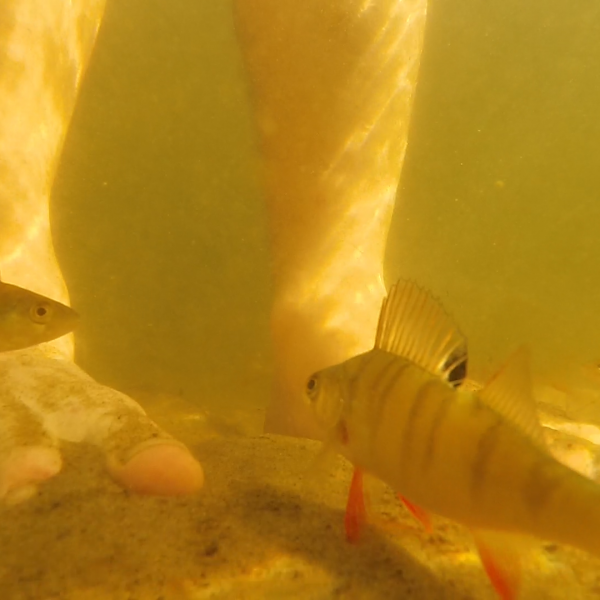Water situation snapshots
Select snapshot
Algae situation
Blue-green algae situation in the map service Send your observations
Send your observationsThe maps show the blue-green algae situation as observations from around 400 observation points, most of which are public bathing areas. The situation at the observation points is assessed once a week. Citizens can also report their blue-green algae observations and, using the Havaintolähetti app, set up their own observation points. Please note that the algae situation at an observation point may change rapidly, for example with the weather. Blue-green algae may produce different algal toxins. You should not swim in water containing blue-green algae, or allow your pets to go into it.
Blue-green algae situation 8.8.2025
The blue-green algae situation has remained calm
During the past week, the blue-green algae situation has remained calm in inland, coastal and offshore areas. Less blue-green algae have been observed in inland waters and coastal areas than typically in late summer. The blue-green algae situation has also remained stable in offshore areas, and windy weather has kept the algae mixed with water in all water areas.
The number of blue-green algae observations in inland waters has increased slightly since the previous week, but the amount of blue-green algae this week is still lower than typical in late summer. The heavy rainfall and strong winds of recent days have, in places, increased nutrient levels in lake waters and intensified blue-green algae blooms. Abundant amount of algae has been observed at six inland water observation sites, in Uusimaa, Pirkanmaa, Kainuu and North Ostrobothnia, in the national blue-green algae monitoring. There have been observations of some blue-green algae at a total of 23 inland water observation sites, mostly in Southern Finland, but also in some places of Central and Northern Finland.
The number of blue-green algae observations in coastal areas has decreased this week, and less blue-green algae has been observed than typically in late summer. Abundant algae have been observed at one coastal observation site of the national blue-green algae monitoring, in Southwest Finland. Some algae have been observed at 14 observation sites, mostly on the coasts of Uusimaa and Southwest Finland, but individual observations have been recorded on the coasts of Kymenlaakso and Åland.
In offshore areas, the algae situation has remained calm, and the winds have kept blue-green algae mixed with water. Also, the sea water has cooled down slightly, and the surface temperatures are now between 17 and 22 degrees. Some surface blooms were observed at the beginning of the week in the mouth of the Gulf of Finland and in the offshore area of the Bothnian Sea. In addition to blue-green algae, water on the coast is currently clouded by the resuspension of the bottom particles (the phenomenon of winds and waves lifting the bottom material into the water column) and the heavy flow rates of rivers after the rainfall of the week.
In addition to official monitoring, valuable information on the blue-green algae situation is also gathered from the public. This week, a total of 42 observations made by citizens were obtained through the Lake-seawiki and Vesi.fi.
This year’s weekly reports on the blue-green algae situation prepared by the Finnish Environment Institute will end on 7 August, but the national monitoring of blue-green algae will continue until 30 September. Blue-green algae typically still occur in inland waters and sea areas well into the autumn. In the future, the Finnish Environment Institute will provide information on the blue-green algae situation as needed.
More information

What everyone should know about blue-green algae
Blue-green algae are at their most prolific around midsummer and in late summer. Large masses of blue-green algae in the water are a sign of eutrophication. Blue-green algae blooms hamper recreational use of waters and may produce algal toxins. You need to watch out for blue-green algae, which is why learning to recognise them is a good idea.
Recognising blue-green algae
Blue-green algae are usually only seen in the water as small, greenish specks. You cannot lift them out of the water with the stick as you can with filamentous green algae. A thick gunk of blue-green algae may build up in surface or shoreline waters. A good way of identifying them is letting some water stand in a drinking glass; if the specks rise to the surface within an hour, they are blue-green algae. The timing helps to tell blue-green algae apart from pollen: pollen is found in early summer, whereas blue-green algae typically occur in the middle and at the end of the summer.
Why should I watch out?
Some blue-green algae are toxic, but it is impossible to tell them from the non-toxic species by visual examination, and consequently you should be careful with all blue-green algae. You should never ingest water containing them, or use it in the sauna. You should also avoid bathing in the water and using it for watering any plants that you intend to eat. Do not allow your dog or other pets to drink water with blue-green algae or play around in it. Algal toxins can also make animals sick or even prove fatal to them.
Where and when?
Blue-green algae occur especially in lakes affected by eutrophication. In the Baltic Sea, blue-green algae blooms are commonly seen in the Gulf of Finland and the Archipelago Sea. When the water warms up around midsummer, the algae start proliferating. Large algae masses can appear quickly in July and August, and in calm weather they rise to the surface as algal blooms. Report your blue-green algae observations on vesi.fi map service or Järvi-meriwiki!



